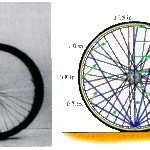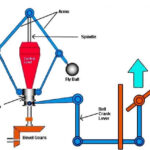Consider two governors A and B running at the same speed. When this speed increases or
decreases by a certain amount, the lift of the sleeve of governor A is greater than the lift of the sleeve of governor B. It is then said that the governor A is more sensitive than the governor B.
In general, the greater the lift of the sleeve corresponding to a given fractional change in
speed, the greater is the sensitiveness of the governor. It may also be stated in another way that for a given lift of the sleeve, the sensitiveness of the governor increases as the speed range decreases. This definition of sensitiveness may be quite satisfactory when the governor is considered as an independent mechanism. But when the governor is fitted to an engine, the practical requirement is simply that the change of equilibrium speed from the full load to the no load position of the sleeve should be as small a fraction as possible of the mean equilibrium speed. The actual displacement of the sleeve is immaterial, provided that it is sufficient to change the energy supplied to the engine by the required amount.
For this reason, the sensitiveness is defined as the ratio of the difference between the maximum and minimum equilibrium speeds to the mean equilibrium speed.
Let
N1 = Minimum equilibrium speed,
N2 = Maximum equilibrium speed, and



